For a long time, the only country in East Asia that I had any level of interest in visiting was the Republic of Korea. By this time, I cannot precisely remember exactly why I had originally formed that opinion, but when I initially started devising the route for this section of the World2 Tour it was a foregone conclusion that Korea would be a part of my plans. As I began to develop a more detailed route, however, my enthusiasm for that segment declined noticeably. The reason for that was similar to why I abruptly shortened my unplanned segment in Turkey, earlier in the Tour. Specifically, my attempts to locate pleasurable roads for cycling in Korea frequently fell short. As a recently-industrialized country, the transportation infrastructure appeared characteristically grim, and everywhere I looked I only found multi-lane, high-speed roadways. Nevertheless, I still included a relatively short section in Korea in my original route plans for the Tour.
However, in the spring of 2020, when uncertainty overcame the World, one of the first places I removed from the latter portions of the Tour was Korea, primarily for the reason mentioned above. In short order that really didn’t matter, because soon the entirety of my plan for the second half of the Tour was ultimately scrapped. One thing led to another, of course, and several months later, with my final destination still tightly closed, I had no choice but to make a diversion back to Asia, specifically, Thailand. One of the reasons I selected that country for my next destination was that there was an intriguing possibility for onward travel from there. In my initial thoughts, that possibility was not Korea, but rather, Japan. The latter country seemed slightly more appropriate in terms of providing a destination amenable to a fairly long segment for the later months of the Tour.
Japan’s entry policies at the time were bewilderingly complex, but, after reading through them many times, it seemed like I would be allowed to enter. One of the policies that was advantageous, but rather rare among the nations of the World, was that the first criterion for entry was not citizenship, but recent geographical location. So, people who had spent more than the prior fourteen days in a country with a low case rate could enter Japan, regardless of which passport they held. At the time, the list of Red Zone countries was prohibitively high, with more than one hundred fifty listed, and only a handful were in the Green Zone, of which Thailand was one. Additionally, while most countries which normally had visa-free entry with Japan had recently had that status suspended, US citizens were still not required to obtain a visa. So, I seemed to be alright on the two main counts.
However, there was still some uncertainty. One official Web page stated that only foreigners who had previously-established residency could enter, and that would be checked when applying for a visa, or evaluated by an immigration officer upon entry. Another government site did not specify that particular requirement. Therefore, I felt like I could indeed enter the country, but I could not be completely sure. As it turned out, all of that evaluation and planning was a wasted effort. I had wisely waited until the last possible moment to by a ticket to travel there, which turned out to be a good decision. For, just about a week before I would have left Thailand for Japan, the former’s recently-accelerating covid outbreak pushed it into the Red Zone along with most of the World, and settled the issue in my case. In hindsight, this may have been for the best. A few months earlier, when I first devised this option, much of Japan was in a State of Emergency. I had assumed that the situation would have improved by the time I intended to visit, but it really hadn’t. So I left the people of Japan to juggle their ongoing outbreak and the Olympics on their own. Consequently, a second diversion was needed, on short notice, and with almost no other possibilities available, Korea was back on my route. For the first time since I left Kyiv, in August of last year, I would be in country that was a World2 Tour original.
Of course, this would not be a straightforward matter, once again, with the first delay occurring right at the start. South Korea had been one of the better countries regarding its pandemic response, with robust tracking systems, a population that largely complied with sensible preventative measures, and, as I arrived, a vaccination program that was starting to pick up speed after a somewhat slow start. However, the primary factor that concerned me was another fourteen-day quarantine, something I most certainly was not looking forward to. The overall process was similar to what I had just experienced in Thailand, so I won’t relate many details, however, there were a few notable differences.
For one, before departing for Bangkok a great deal of paperwork had to be completed and everything paid for in advance, but the details related to the quarantine in Korea were left until arrival at the Incheon Airport. Therefore, I had no real information about what was going to happen until I was on the ground in the country. All arrivals that evening were taken as a group to one of the big chain hotels at the airport, where documents were completed, a significant payment was collected, and the obligatory sample for PCR testing was taken, before everyone was allowed to find their rooms. The registration process had the feel of perhaps being organized by the military, and that impression continued throughout the following weeks, with recorded messages in perhaps six languages being broadcast several times a day, reminding guests of the policies and stating things like, If you leave your room you will be deported.
Meals were also a little lacking, and while there were both Asian and Western options (with some allowances for things like meatless preferences,) there were no choices of entrées, as there had been in Thailand. Most of the time it was fine, but, occasionally, not so much. Finally, unlike Bangkok, there was no possibility to rent any exercise equipment, which was the one thing that I really needed. Suffice to say, when day fourteen was over, despite the fact that my quarantine view was just slightly better than last time, I only wanted to get out of there as quickly as possible.
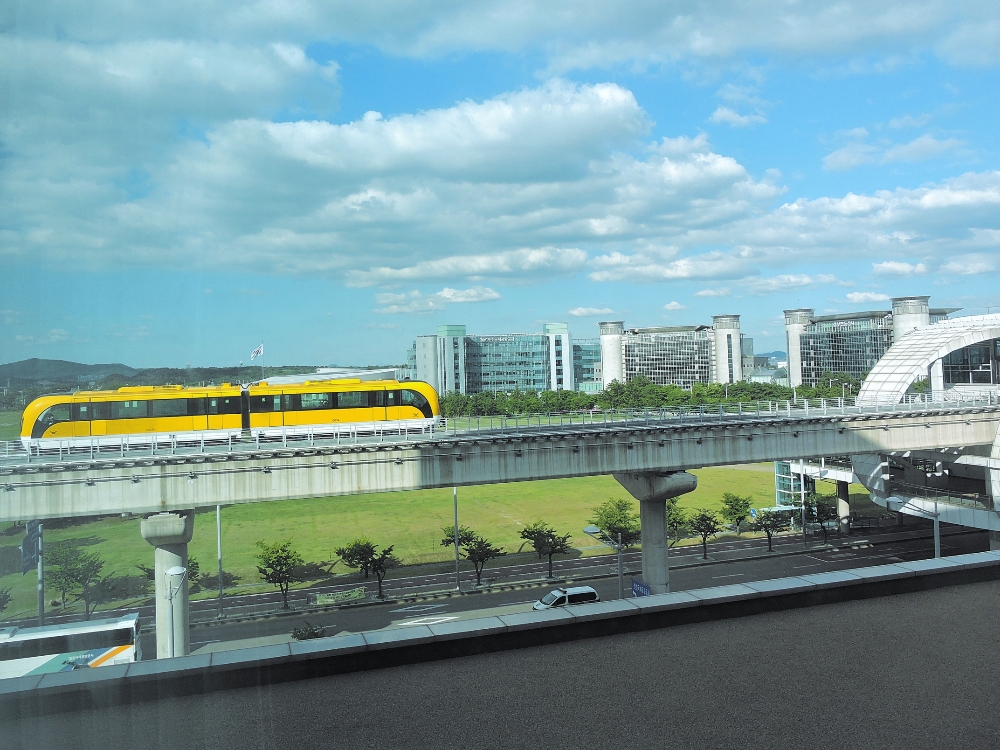
During the arrival process I was supposed to provide the address where I would be staying after the quarantine period, not exactly the kind of thing that is simple for someone on a bicycle tour to produce. With limited time available to look at options, I booked one night in a hotel just across the river from the Seoul city center, which satisfied that requirement, even though I had no real desire to go into the capital at the time. Normally, when entering a major city during a tour, I would prefer to enter, transit, or bypass all the urban congestion by using rail, or another similar method of transport. However, in this case the only thing in life I wanted at that moment was to be back on the bike, with the concurrent benefit of starting to regain my lost form. In that instance, what could have been a short, easy ride soon revealed some of the less than ideal aspects of the forthcoming section of the Tour. Incheon Airport is on an island, and the two bridges that connect to the mainland, though they are wide, and with shoulders, are both expressways. Fortunately, there is still one ferry in operation, so this one was an easy circumstance to overcome.
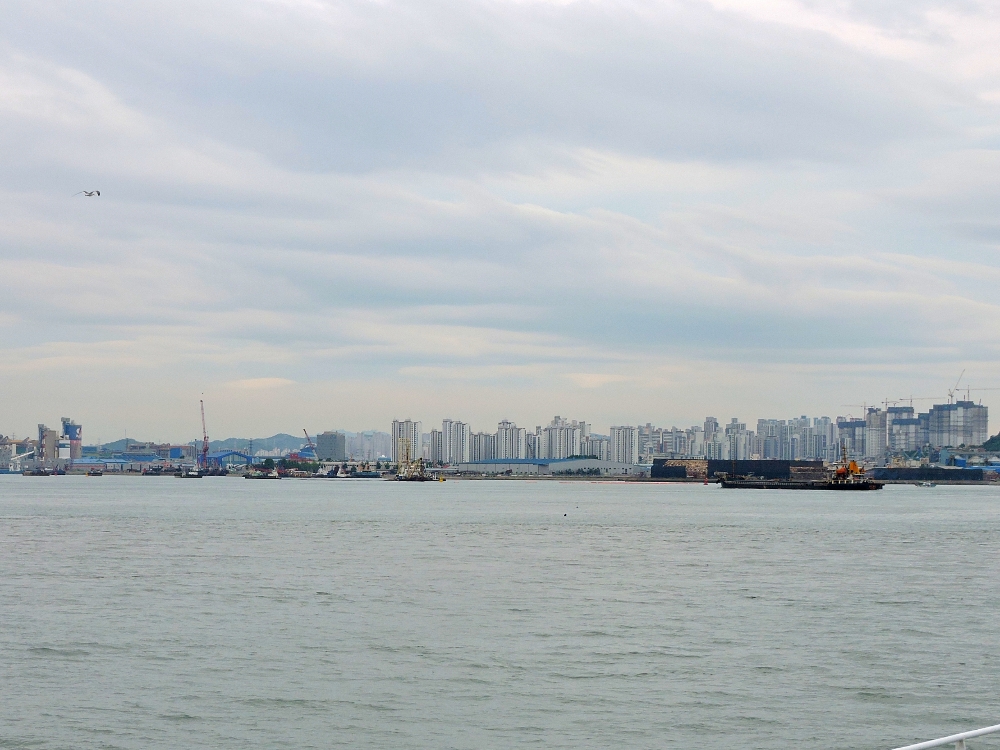
One other issue that quickly became apparent is that Google Maps has been substantially crippled in South Korea, ostensibly to prevent those pesky North Koreans from gleaning any sensitive
information by using it. The app still functions, but information is less abundant, Street View is limited, and offline maps don’t work well at all. There is at least one home-grown alternative, which presumably hides things from Pyongyang, and it is almost identical to the original, and even has some enhanced functionality, but many places are only labeled in Korean, things like reviews are the in the same situation, and I could not find way to even try to get offline maps, so overall it was of limited utility for me. Fortunately the app I use for routing and navigation, RideWithGPS, is based on OpenStreetMaps and it still has a normal level of detail for South Korea.
However, when using that for routing in Korea, I soon learned that is important to use the cycling mode of the routing algorithm. Normally, I avoid doing that because that mode has some quirks, such as always suggesting a zig-zagging course through any town that has a rectangular grid of streets. In this case that situation needed to be lived with, because routing on my own, as I had tentatively discovered years earlier, was fraught with peril. As a country that rebuilt itself, nearly from scratch, in a decidedly industrial manner, only seventy years ago, it is not really surprising that its urban design and transportation infrastructures leave a lot to be desired, especially where cycling is concerned. Roads that seemingly should be secondary or minor types often have eight lanes and are lined with numerous traffic signals, with inordinately long cycle times. Therefore, the algorithm directed me onto a route that was nearly twice as long as I supposed it would have been, preferring to put me on separated cycling paths, a subject I will come back to momentarily, whenever it could. That route would become even longer when I took the wrong fork on one of those paths, sending me back into a more labyrinthine section of the city. However, while everything was open with the current level of restrictions, I did get the impression that overall the country was slightly less busy and congested than it might have otherwise been, absent a pandemic. Nevertheless, even with the pleasure of finally being back on the bike, the generally mild terrain, and decent weather, that first eighty kilometers in the country were quite stressful. Finally, it also did not take me long to realize that South Korea would be the most expensive country I had been to, probably since I left Sweden around a year earlier.
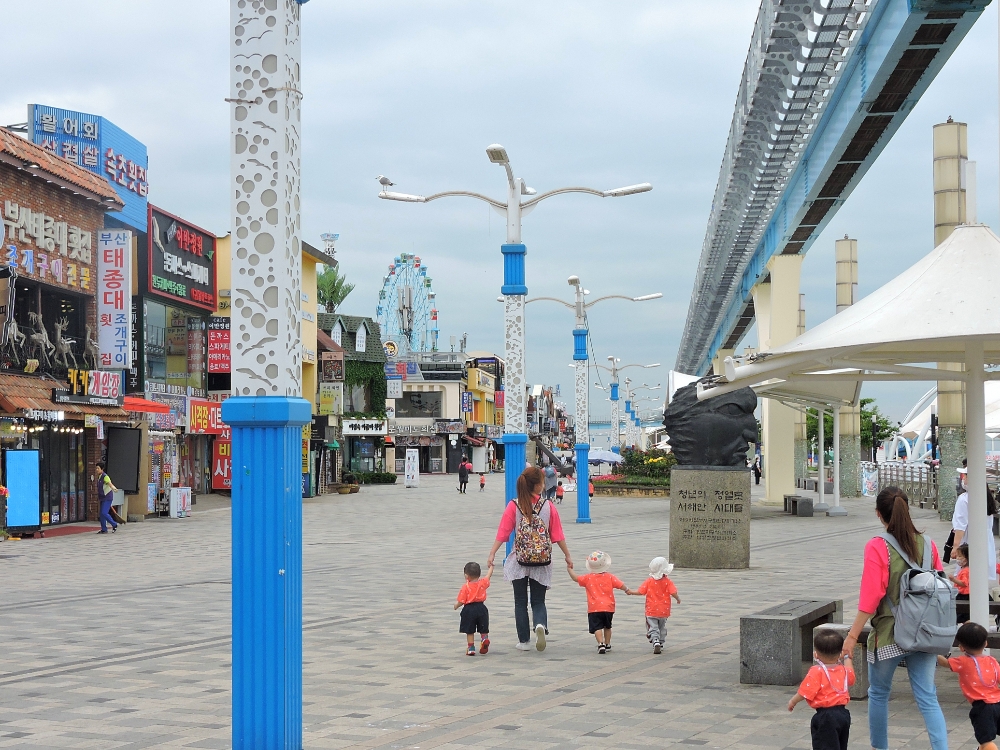
On the plus side, as I was getting started, the first days of summer were in force, replete with pleasantly mild temperatures, and skies that were frequently overcast, which moderated the strength of the Sun. The positive affect this had on my mood cannot be overstated. Additionally, now that I was back around thirty-seven degrees, north latitude, and just a few days short of the summer solstice, it was a real treat to enjoy fourteen hours of daylight for a change. Nothing like Iceland had been earlier in the Tour, of course, but nice, nonetheless. However, the way my route was spaced out, with generally short daily distances, resulting from a number of reasons, I really didn’t get to take advantage of the relatively late sunsets, the way I have done on previous tours. It was also a pleasure to be back in a biome dominated by deciduous, temperate trees, especially as they were, at the time, exhibiting the full-on green of summer. Having spent my childhood in such an environment, I can say with some certainty that this represents my natural habitat, and whenever I am surrounded by that type of life my spirits are always raised.
Anxious to keep moving, I continued south, along a route that would maximize my potential number of visits to World Heritage Sites. Progress was disappointingly slow, however. The urban conglomeration of Seoul continued, essentially until I was south of the town of Cheonan, shown below. Not only is the capital filled with high-rise apartment towers, shopping centers, and multi-lane roads, but around the country, even smaller cities and towns have the same Soul as Seoul. With that, and the corresponding need to stop to check maps almost constantly, the omnipresent traffic signals, and a general lack of visual interest, I probably put down a slower cycling pace there than just about anywhere else I have previously toured. After just a few days, I had started to wonder if I might eventually truncate my route in the country, just as I had done in Turkey, earlier in the Tour.
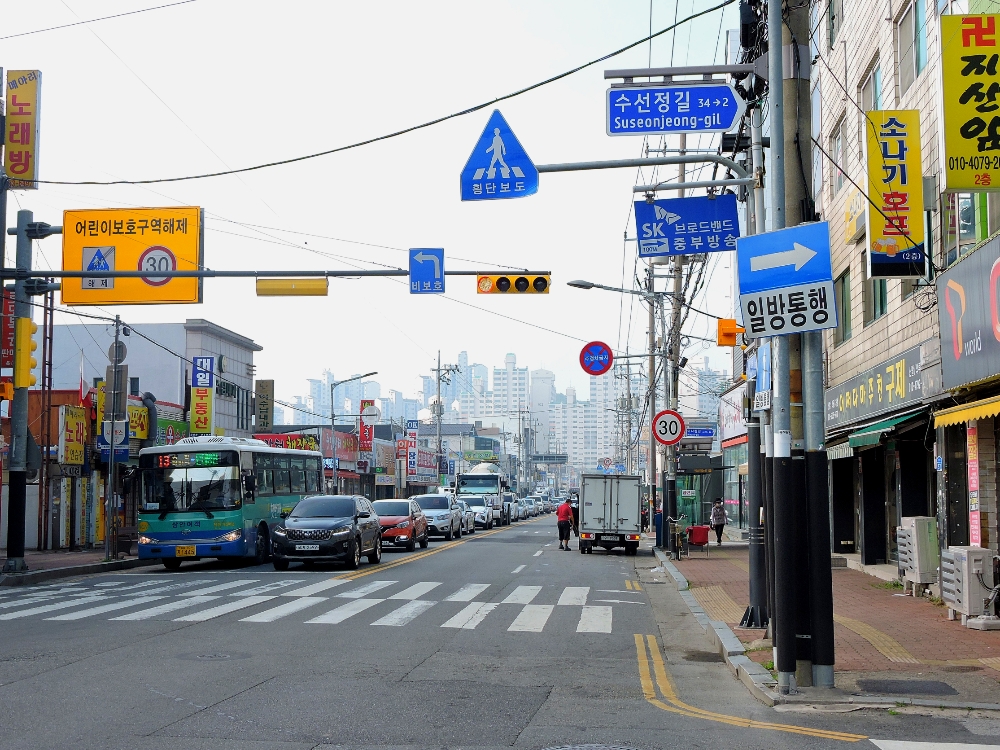
Fortunately, at just about that time the conditions improved somewhat. A certain amount of agricultural land began to line the route, with correspondingly calmer roadways, and some of the bike paths the algorithm sent me along were comparatively nice. Korea actually has some level of cycling infrastructure in place, though the quality varies tremendously from place to place. There are even a handful of long-distance, intercity routes spanning the country, though, like most of the Korean cycling paths in general, these tend to follow the course of rivers, so if you desire to go somewhere that the rivers don’t you are largely on your own. The nice bike paths in Seoul were among the best I have seen anywhere, deserving of the moniker Veloways, smooth and wide, with nice amenities like refreshment stands and frequent bathrooms. Apart from those, however, a few of the others were of average quality, and many of those in most older cities were substandard, often being collocated with sidewalks, frequently in an undesirable manner. Nevertheless, though I was still moving significantly more slowly than I would have preferred, I was beginning to enjoy more pleasant scenes like the two shown below.
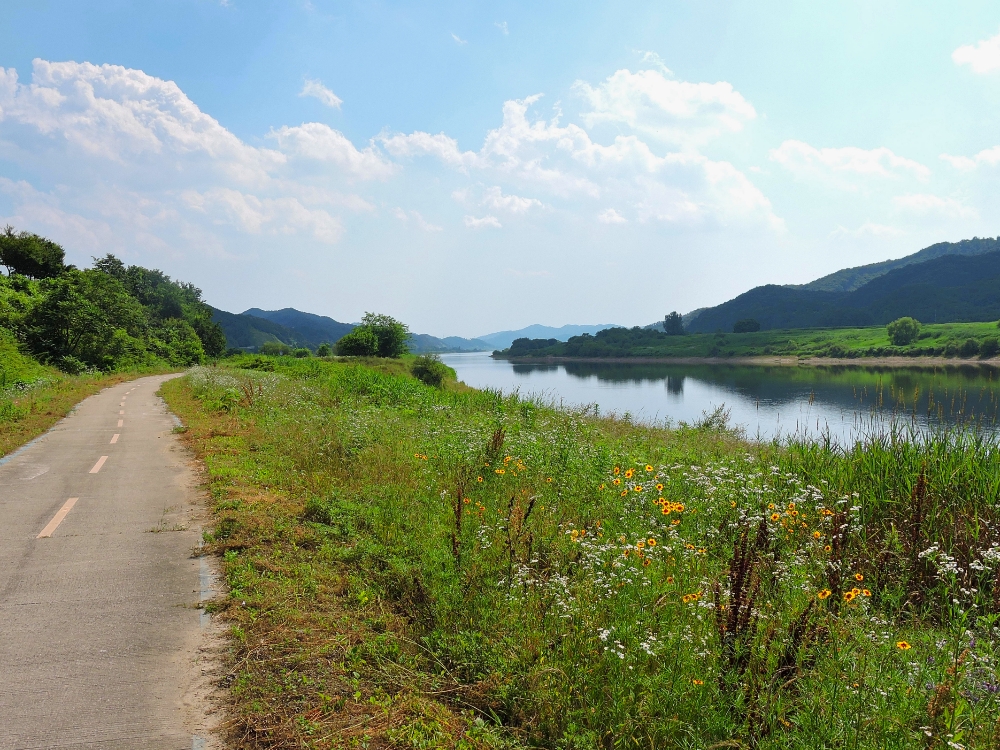
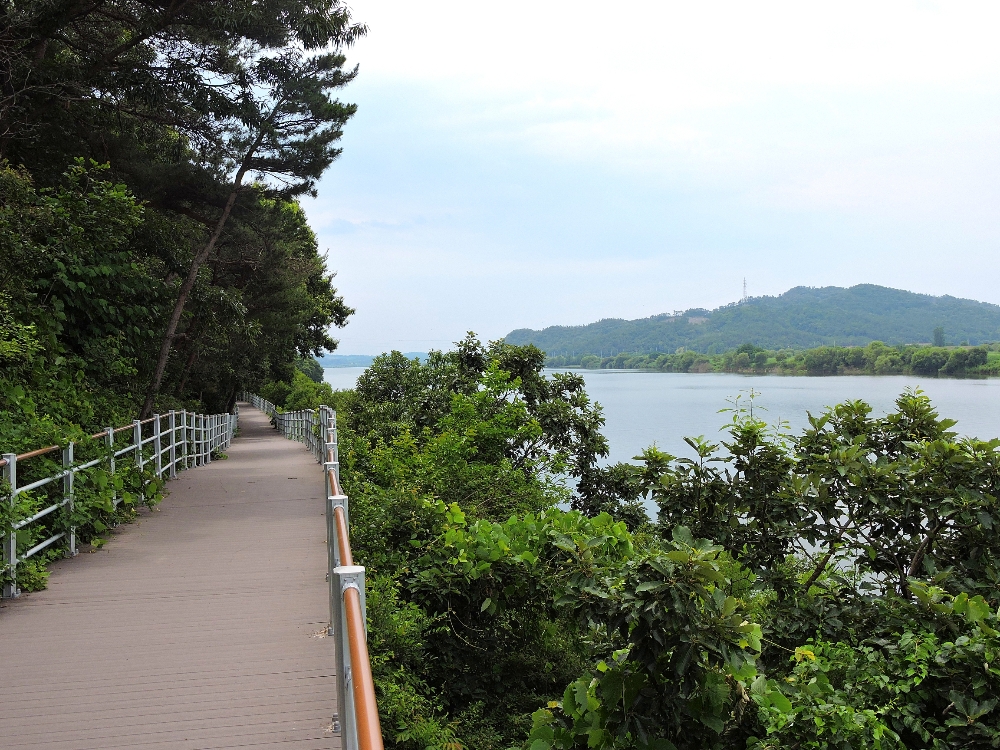
It was at that point, just when I had almost ridden back into form following the quarantine layoff, when I was becoming accustomed to the particulars of Korean society, and when the surroundings had started to become more pleasant and enjoyable, that the second, unexpected, delay struck without warning. Once again, it took the form of the same difficult-to-repair mechanical issue with the bike that shut me down for a couple of weeks in Sweden in the prior year, namely a worn-out ratchet ring in my rear hub. As this is the type of problem that completely prevents any forward motion, I knew that I was going to be offline for several days, at the minimum.
Like the previous occurrence, the old-stock nature of my Phil hub would make this a more complicated procedure than it would normally be, even more so without the more appropriate tools I would have had available in my shop back at home. However, the earlier event also gave me the knowledge of the correct course of action to take this time. An improvised method would need to be devised to remove the worn ring—sure to be the most troublesome task overall—and a new-old-stock hub would need to be located somewhere, probably in North America, and shipped to me in Korea, from which the ring would be scavenged and subsequently installed into my current hub. The additional bad news was that, as stipulated by Murphy’s Law, the closest town that I was able to limp into that day was a quintessential example of a modern Korean small city, and, in my case, mostly useless. That is to say, it was a place that appeared to be only twenty or thirty years old, composed entirely of high-rise apartments, restaurants, several hotels, and commercial centers, but without any mechanical shops, or similar enterprises that could potentially be of use to me under the circumstances, and only one hardware store, located on the other side of town. I feared that this situation would make my repair work take even longer, and, since there was little else to do there while waiting for my parts to arrive, my level of frustration would grow accordingly.
There was only one useful task that I was able to accomplish during that period of time. During my touring career, for all non-cycling activities, I have always protected my feet with a simple pair of moccasins. In my opinion, this is the best solution for the task at hand, but on a very long tour they will invariably develop holes in their soles, even with the double-sole variety that I use now. On my previous long tour I suffered with that situation for several months, before purchasing a new pair online to be included with my regular supplies shipments. During this Tour I desired a better solution, and when I was in Stockholm, in the spring of 2020, the point in time when the issue first manifested itself, there happened to be a cobbler just around the corner from my hotel. I was a little surprised that he agreed to attempt a repair, but very pleased by his skillful performance of that task. Several months later, in Kampala, Uganda, another shoe-man cut some rubber insoles for me, which also did a nice job of eliminating the second set of holes. It had recently become time to take care of that issue for a third time, but in that modern
Korean town there were no obvious signs of cobblers anywhere to be seen. However, there was a general store nearby that had some very thin floor mats and also sold shoe glue. With those items I was able to make my own set of new inner and outer soles, and glue them in place. This, much to my surprise, seemed to work very well.
I only mention this because, coincidentally, the original repair by the cobbler in Stockholm was also performed while I was offline, when dealing with the same lengthy, complex hub repair. Therefore, it seems that I have inadvertently uncovered a new axiom for long tours. Specifically, whenever holes in moccasins start to become unbearable, it is a sure sign that a hub ratchet failure is also imminent. For now, I am again able to walk comfortably, but what I really want, and need, is to be wearing my cycling shoes again. Unfortunately, when that will next happen, I cannot yet say.